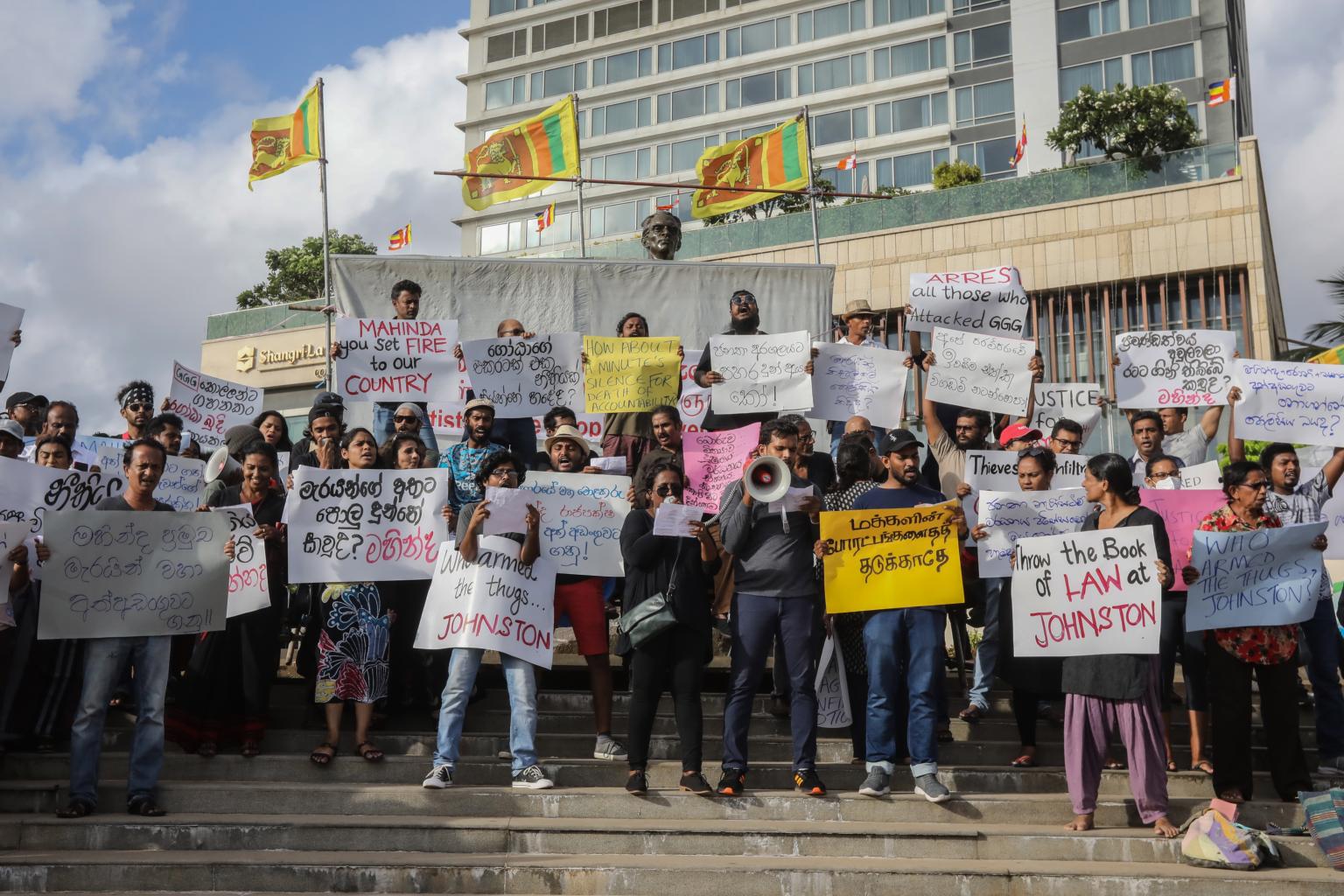Sri Lanka enters default and warns inflation may surge to 40%
Sign up now: Get ST's newsletters delivered to your inbox

Protesters demonstrating in front of the Presidential Secretariat in Colombo, Sri Lanka, on May 17, 2022.
PHOTO: EPA-EFE
Follow topic:
COLOMBO (BLOOMBERG) - Sri Lanka fell into default for the first time in its history as the government struggles to halt an economic meltdown that has prompted mass protests and a political crisis.
Policymakers had flagged to creditors that the nation would not be able to make payments until the debt is restructured, and is therefore in pre-emptive default, central bank governor Nandalal Weerasinghe said at a briefing on Thursday (May 19).
The coupon payments, originally due on April 18, were worth US$78 million (S$108 million) combined on notes due in 2023 and 2028, with a 30-day grace period that expired on Wednesday.
Sri Lanka has been mired in turmoil amid surging inflation - which Mr Weerasinghe sees accelerating to 40 per cent in coming months - a plummeting currency and an economic crisis that has left the country short of the hard currency it needs to import food and fuel.
Public anger has boiled over into violent protests and led the government to announce last month that it would halt payments on its US$12.6 billion pile of foreign debt to preserve cash for essential goods.
That marks the nation's first sovereign debt default since it gained independence from Britain in 1948.
Its bonds are among the worst performers in the world this year and trade deep in distressed territory, with holders bracing for losses approaching 60 US cents on the dollar.
Many of Sri Lanka's bonds have so-called cross-default clauses, which drag all the outstanding dollar debt into default if there is a missed payment in a single bond.
On the debt due in 2023 and 2028, the clause is triggered if any payment that exceeds US$25 million is not met.
The country was already declared in selective default by S&P Global Ratings in late April.
Sri Lanka is in talks with the International Monetary Fund for a bailout and needs to negotiate a debt restructuring with creditors.
The country has previously said it needs between US$3 billion and US$4 billion this year to pull itself out of crisis.
"It's not a surprise," said Mr Guido Chamorro, co-head of emerging-market hard-currency debt at Pictet Asset Management, which holds Sri Lankan bonds. "It was well flagged and mostly priced with most bonds priced in the high 30s."
Mr Weerasinghe said on Thursday that he would like to see a finance minister appointed to sign off on any aid agreements.
However, the political situation has improved with the appointment of a prime minister and Mr Weerasinghe says that gives him comfort to continue in the job.
Last week, he had threatened to quit if political stability does not return soon.
Tighter global credit brought about by a litany of factors - United States Federal Reserve interest rate hikes, soaring commodity costs, the war in Ukraine - have had a devastating effect on the low-income country, which is the biggest sovereign issuer of junk dollar bonds in Asia.
And all that is after the pandemic reduced tourism earnings by more than three quarters.
Sri Lanka's bonds were mixed on Thursday but higher than their record lows reached last week, suggesting traders expect better recovery values.
Dollar bonds due in 2030 were indicated 0.28 cents lower at 38.39 cents on the dollar and notes due in July were 0.22 cents higher at 42.78 cents, according to data compiled by Bloomberg.
The Colombo All-Share Index slumped more than 3 per cent amid a global equity sell-off.
"Defaults are not the end, they can signal a new beginning," said Mr Chamorro. "Now the hard work begins."

